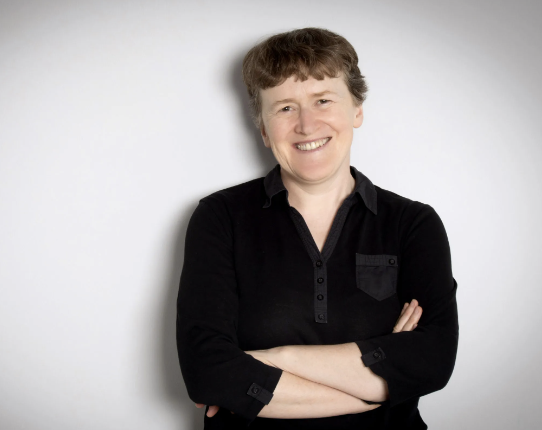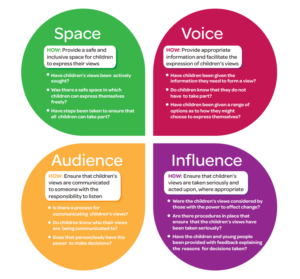Fionnuala Ward, Deputy Principal, Griffith Barracks Multi-Denominational School
It really is. Definitely for primary schools. And I’m such a fan of Laura Lundy. I love that model where space and voice and audience and influence are all interconnected. I saw her speak at an Educate Together conference and boy, was she impressive!
But for me, there’s a missing component when it comes to student-led democratic bodies, be they Student, Green, Active or Creative Councils.
Time. Honestly, it’s as simple as that. A regular slot is hard to find.
And while I’m at it, throw in supervision of your own class. If you’re a class teacher, you need someone readily available to hold the fort when you’re off endeavouring to access and validate those voices.
And Lundy is so right when she talks about space. The bigger the school, the bigger the council and the bigger the room that’s needed to host these meetings. But schools don’t generally have lovely, airy spaces sitting idle, just waiting for a council to take up temporary residence. So, as liaison teacher, if the hall’s already in use, you do what you can.

So, time, space and logistics are the really maddening elements.
But here we go. I offer some recommendations that may or may not be of use. And, for the most part, they’re relevant to Student Councils.
- Names. You may know the names of all the children but believe me, unless it’s a relatively small school, they won’t. So, you need to do icebreaker after icebreaker because a group that doesn’t know each other’s names is not going to work at optimal levels. And power dynamics will kick in.
- Regular meetings with the principal where the council brings along suggestions from the boxes in the classroom work well. It’s best if the council have gone through the suggestions beforehand and whittled them down so there’s no repetition or let’s say, suggestions that are overly aspirational. Minutes will need to be taken at these meetings.
- And good, meaty projects are needed. The council in our school runs an all-day Bake Sale, which the children love, for the most obvious of reasons. And really sometimes that’s enough. One particular boy was in his element and spent the day grinning from ear to ear, with icing sugar permanently speckled around his mouth.
- And the council came up with the idea of a quiz, including Pictionary rounds (which they also came up with) between two staff members and two pupils on those end-of-term mornings. These quizzes are broadcast around the school as zoom meetings and are viewable on the whiteboards. Now, links work and don’t work. Audio works and doesn’t work. We’ve run out of time and the meeting has come to an abrupt end. But if ever that mantra about education being a process and not a product comes into play, it’s with this.
- And last year, we tried out an all-school vote on the names of the two incoming Junior Infant classes. Our school opts for Irish animal names, so the council came up with five options – madra uisce; feilechán; lacha; bóin De and ialtóg. It was done on a PR basis and everyone in the school – pupils, teachers, ANAs, secretary, cleaners, accountant and caretaker – got to vote. We set aside a morning for the count, when the council went through the ballot papers and made regular announcements over the intercom. This time around we hope to go into much more detail about quotas and surpluses and eliminations. Madra uisce and lacha won out in the end, by the way.
And that’s it. I assign roles and then try to stay out of the meetings, as much as possible, which works and doesn’t work in equal measures. But I suppose we’re getting there. Maybe. Perhaps.
Good luck!

